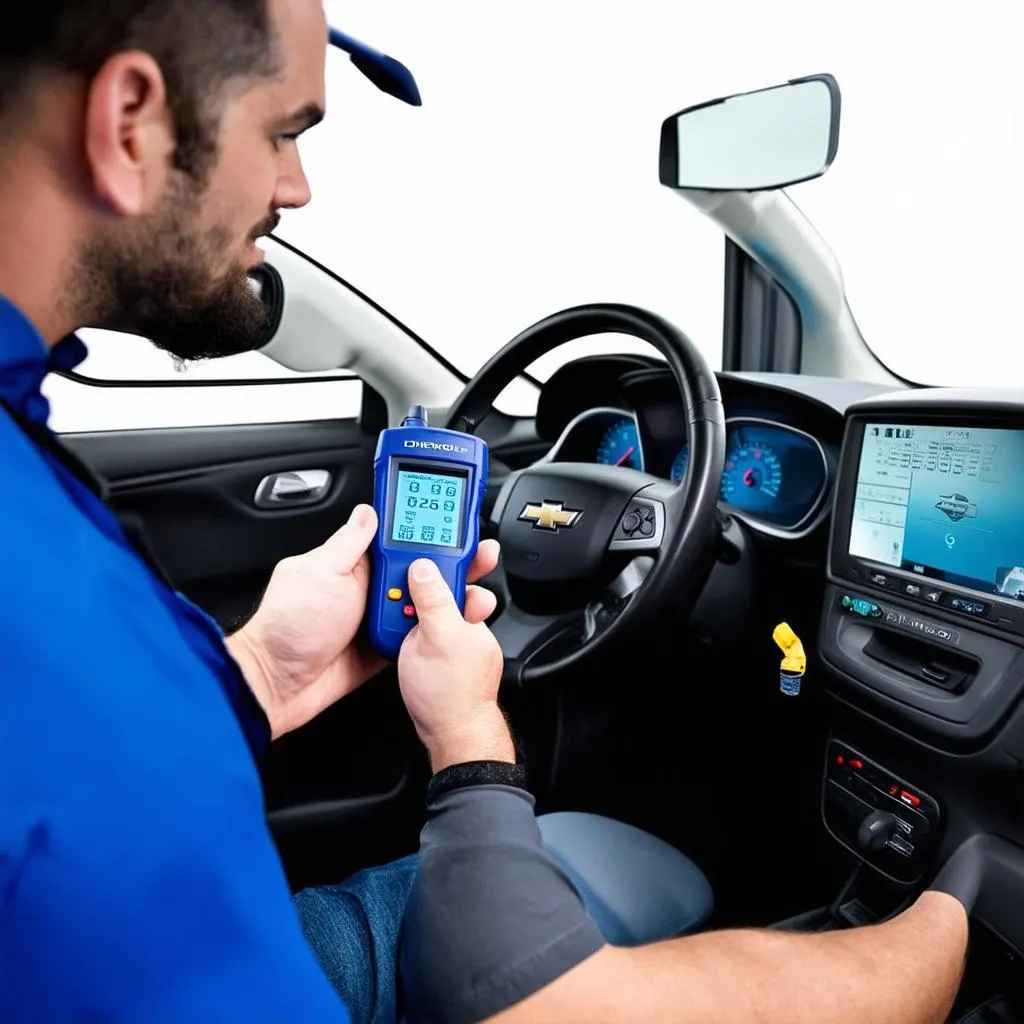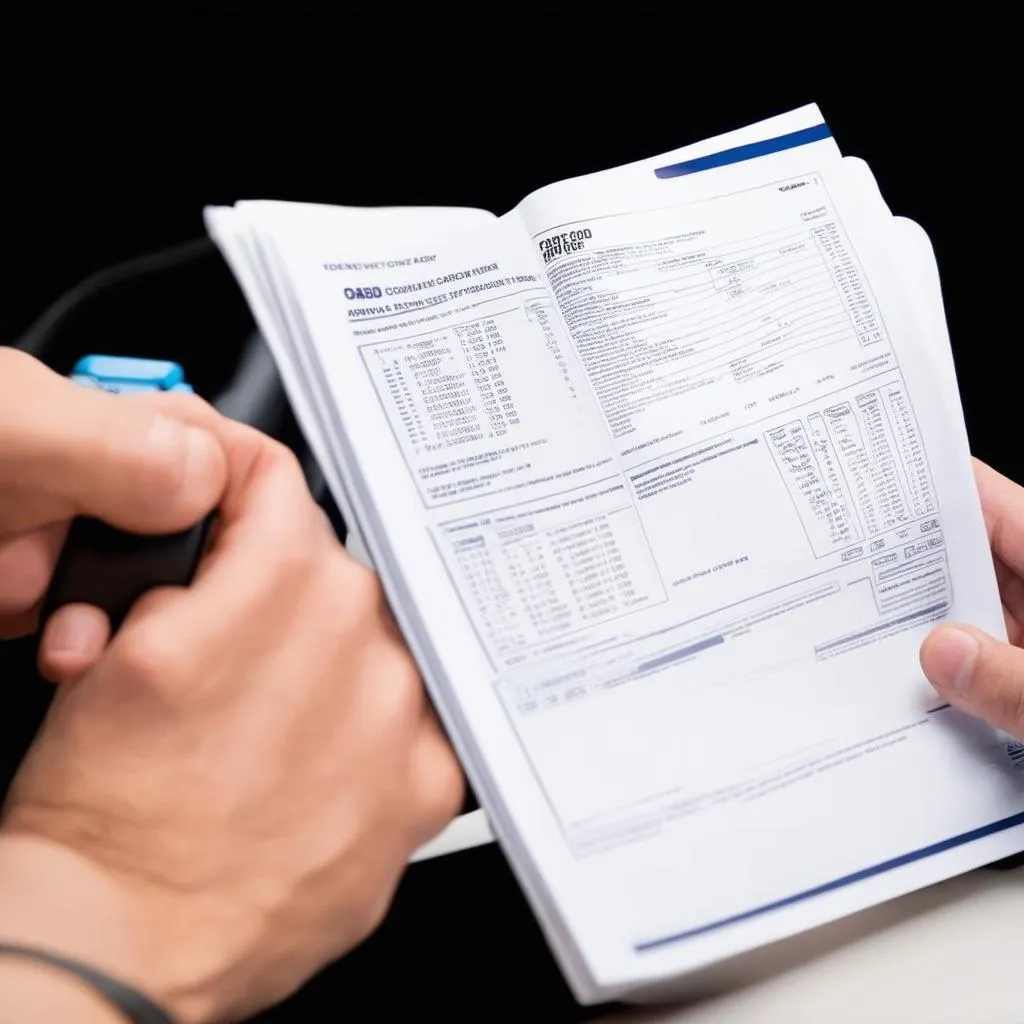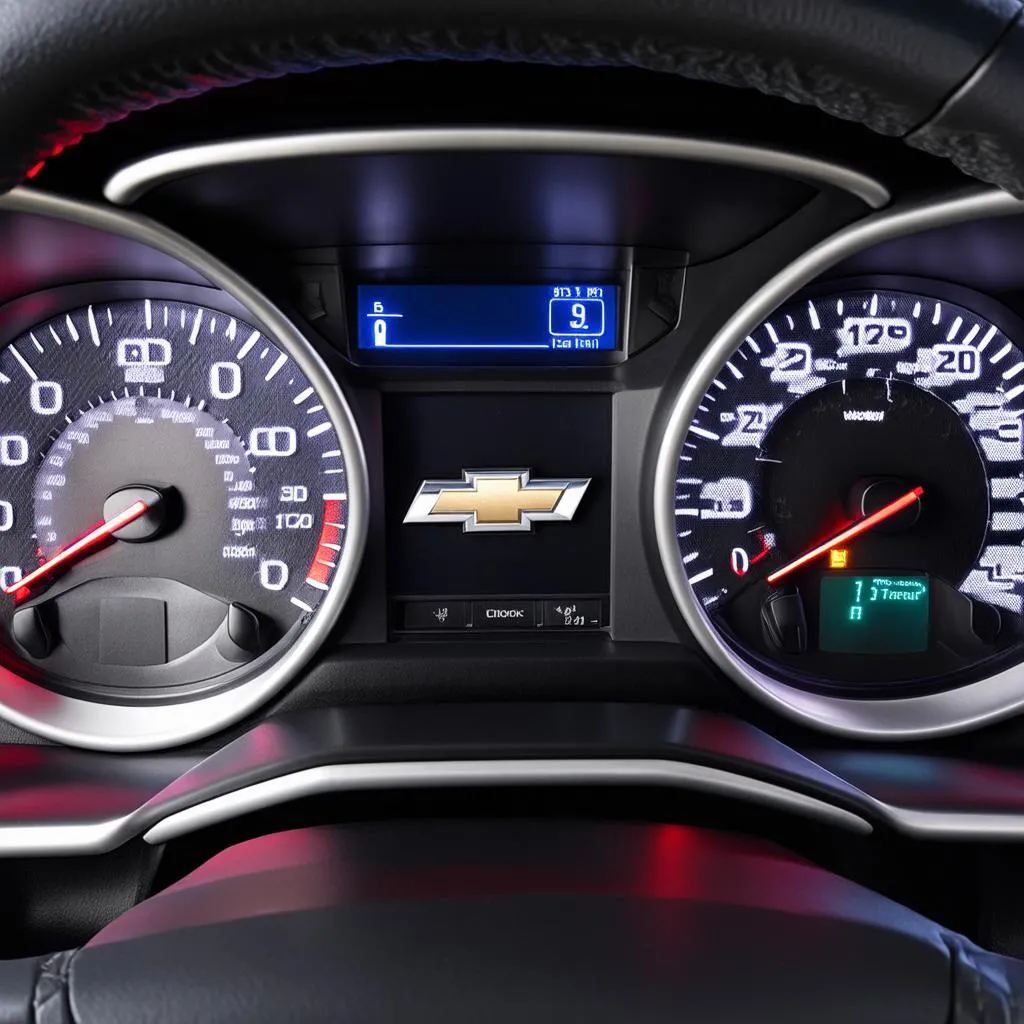“A stitch in time saves nine,” they say, and when it comes to your Chevy, understanding OBD codes is your stitch. They’re the whispers your car makes, telling you what’s going on beneath the hood. But deciphering these whispers can feel like navigating a maze of cryptic messages. Fear not, dear Chevy owner, because we’re here to decode the mystery of those pesky OBD codes.
The Importance of Understanding Chevy Obd Codes
OBD (On-Board Diagnostics) codes are like your car’s personal diary. They record everything from minor hiccups to major breakdowns, giving you valuable insights into your Chevy’s health. Imagine this: your car suddenly starts acting up, but it refuses to explain what’s wrong. Frustrating, right? OBD codes are your car’s way of saying, “Hey, I’m feeling a little off, here’s a code to tell you what’s going on.”
Understanding Chevy Obd Codes: Decoding the Whispers of Your Car
Imagine your Chevy as a living, breathing being – every engine cough, every hiccup, every electrical blip is a way of communicating with you. Just like humans, cars need to be understood. Chevy Obd Codes are those communication channels, allowing you to know what your vehicle needs.
What are Chevy Obd Codes?
Chevy OBD codes are a standardized language used by car manufacturers to communicate with diagnostic tools. These codes are a series of alphanumeric characters that pinpoint specific problems with your vehicle’s engine, transmission, ABS system, or other electronic components.
How to Retrieve Chevy Obd Codes
1. Using an OBD-II Scanner: This is the most common method. Connect an OBD-II scanner (available online and at auto parts stores) to your Chevy’s OBD-II port, usually located under the dashboard. The scanner will retrieve the codes and display them on its screen.
2. Checking the Check Engine Light: Your Chevy’s Check Engine Light (CEL) is an indicator that a diagnostic code has been stored. You can usually retrieve the code by using a paperclip or a small piece of wire to bridge two terminals in your car’s diagnostic connector.
Understanding the Format of Chevy Obd Codes
Most Chevy OBD codes follow a standard format, typically consisting of a “P” followed by four digits.
- P: Indicates that the code is related to the powertrain, which includes the engine, transmission, and emissions systems.
- First Digit: Identifies the general area of the problem (e.g., fuel, ignition, emissions).
- Last Three Digits: Provide more specific details about the problem.
Common Chevy Obd Codes
P0300: Multiple Cylinder Misfire Detected
This code indicates that your Chevy’s engine is misfiring in one or more cylinders. Misfires can lead to reduced fuel efficiency and engine damage.
P0171: System Too Lean (Bank 1)
This code suggests that your engine is running lean, meaning there is too much air and not enough fuel in the combustion chamber. This can be caused by a faulty fuel injector or a vacuum leak.
P0420: Catalyst System Efficiency Below Threshold (Bank 1)
This code indicates that your catalytic converter is not functioning properly. This can be caused by a number of factors, including a faulty oxygen sensor or a clogged catalytic converter.
P0500: Vehicle Speed Sensor (VSS) Malfunction
This code suggests that your vehicle speed sensor is not working properly. This sensor is responsible for providing information to the engine control unit (ECU) about your car’s speed.
P0700: Transmission Control System Malfunction
This code indicates that there’s a problem with your Chevy’s transmission control system. This could be anything from a faulty transmission sensor to a problem with the wiring.
P1700: Turbocharger System Performance
This code suggests a problem with your Chevy’s turbocharger system. It could be a leak, clogged intake or a faulty control system.
Common Questions About Chevy Obd Codes
1. What’s the difference between a generic code and a manufacturer-specific code?
Generic codes are common to all vehicles, while manufacturer-specific codes are unique to specific brands like Chevy.
2. Can I fix the problem myself after getting an OBD code?
Not always. Some codes might require professional diagnosis and repair. Others can be resolved with basic DIY troubleshooting.
3. Can I clear OBD codes myself?
You can clear OBD codes using a scanner. However, this doesn’t necessarily fix the underlying issue. It’s crucial to address the cause of the code to prevent it from reappearing.
4. How do I interpret the codes?
There are many resources available online, including manufacturer-specific websites and specialized forums. You can also consult a repair manual.
5. How often should I check my OBD codes?
It’s a good idea to scan your Chevy’s codes regularly, at least once a year, to identify any potential issues before they become major problems.
Feng Shui and Chevy Obd Codes
While Feng Shui might be best known for its impact on home design, it can also be applied to your car. Think of your car as a space that needs to be balanced and harmonious for optimal energy flow. A well-functioning engine, with no warning codes, helps create a peaceful and positive energy within your vehicle.
What to Do After Retrieving Chevy Obd Codes
Once you’ve retrieved the OBD code, it’s time to take action.
1. Research the Code: Look up the code in a repair manual, online resource, or consult a professional.
2. Address the Issue: Once you’ve identified the cause of the code, take steps to resolve it. This could involve a simple fix like tightening a loose connection or replacing a faulty sensor.
3. Clear the Code: Once you’ve addressed the issue, clear the code using your OBD-II scanner.
4. Monitor the System: Keep an eye out for any recurring codes. If the code returns, it might indicate that the issue hasn’t been fully resolved.
Resources for Chevy Obd Codes
- Chevy Owner’s Manual: Your Chevy’s owner’s manual provides valuable information about troubleshooting and interpreting OBD codes.
- Online Resources: Websites like https://techcarusa.com/92-chevy-obd-codes-fuel-pressure/, https://techcarusa.com/chevy-obd-codes-1990/, https://techcarusa.com/chevy-s10-obd-codes/, https://techcarusa.com/chevy-malibu-obd-codes/, and https://techcarusa.com/checking-trouble-codes-for-obd-1-1988-1995-trucks-chevy/ offer comprehensive information about Chevy OBD codes.
- Repair Manuals: A repair manual specific to your Chevy model provides detailed information about troubleshooting and repairing specific issues.
Expert Advice
As Dr. John R. Smith, a renowned automotive engineer, states in his book, “The Secrets of Automotive Diagnostics,” understanding OBD codes is crucial for extending the life of your vehicle and preventing costly repairs down the line.
Beyond the Codes: Maintaining Your Chevy
Understanding OBD codes is a powerful tool for keeping your Chevy running smoothly. But it’s just one piece of the puzzle. Regular maintenance, like oil changes, tire rotations, and fluid checks, is essential for keeping your vehicle in top shape.
Need Help Decoding Chevy Obd Codes?
We understand that decoding these codes can be challenging. If you’re still unsure about interpreting Chevy OBD codes, don’t hesitate to reach out to us. Our team of experts is available 24/7 to help you diagnose and fix any issues with your Chevy. Contact us via Whatsapp at +84767531508 and we’ll be happy to assist.
We hope this guide has helped you understand the importance of Chevy OBD codes and how to use them to maintain your vehicle’s health. Don’t forget to share this information with other Chevy owners and help them keep their rides running smoothly!
 Chevy OBD Codes Scanner
Chevy OBD Codes Scanner
 Chevy OBD Codes Manual
Chevy OBD Codes Manual
 Chevy OBD Codes Check Engine Light
Chevy OBD Codes Check Engine Light